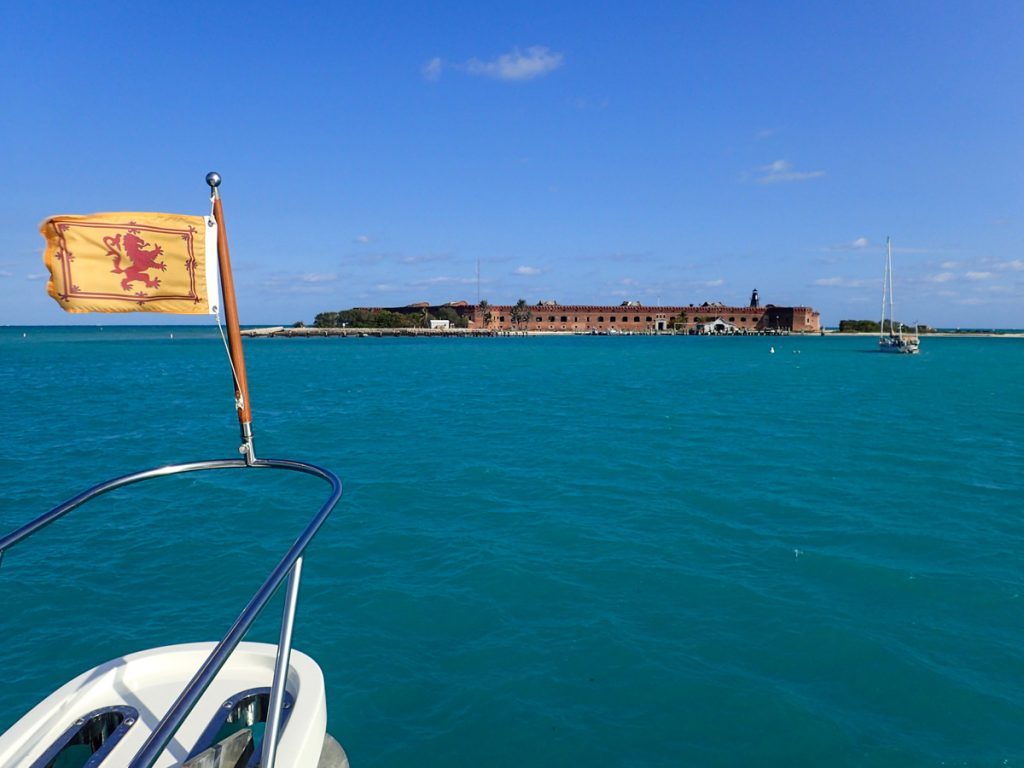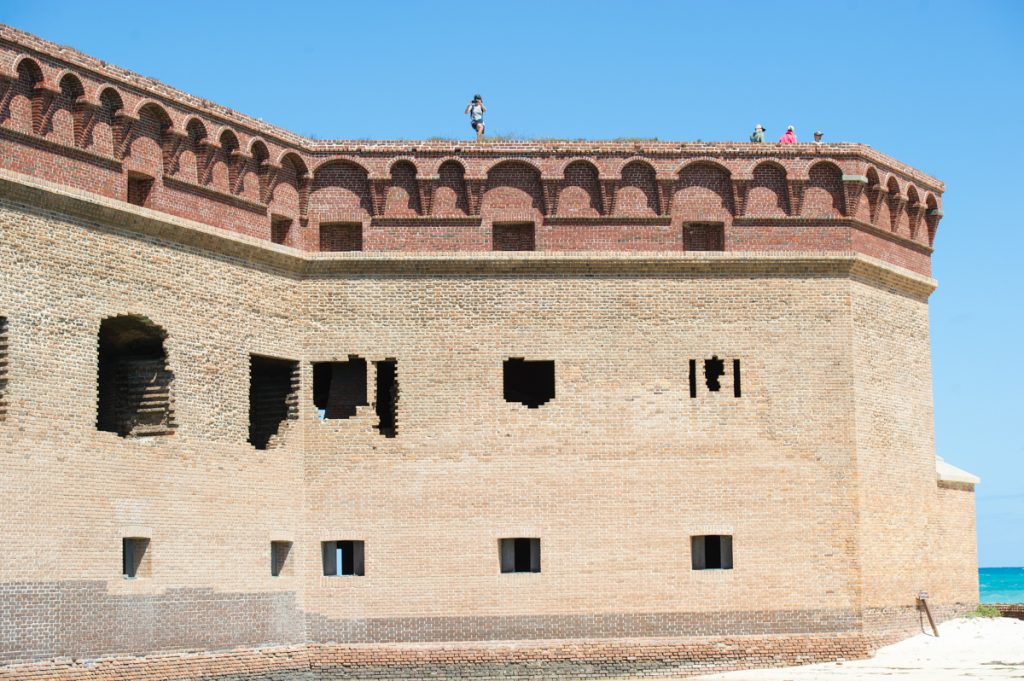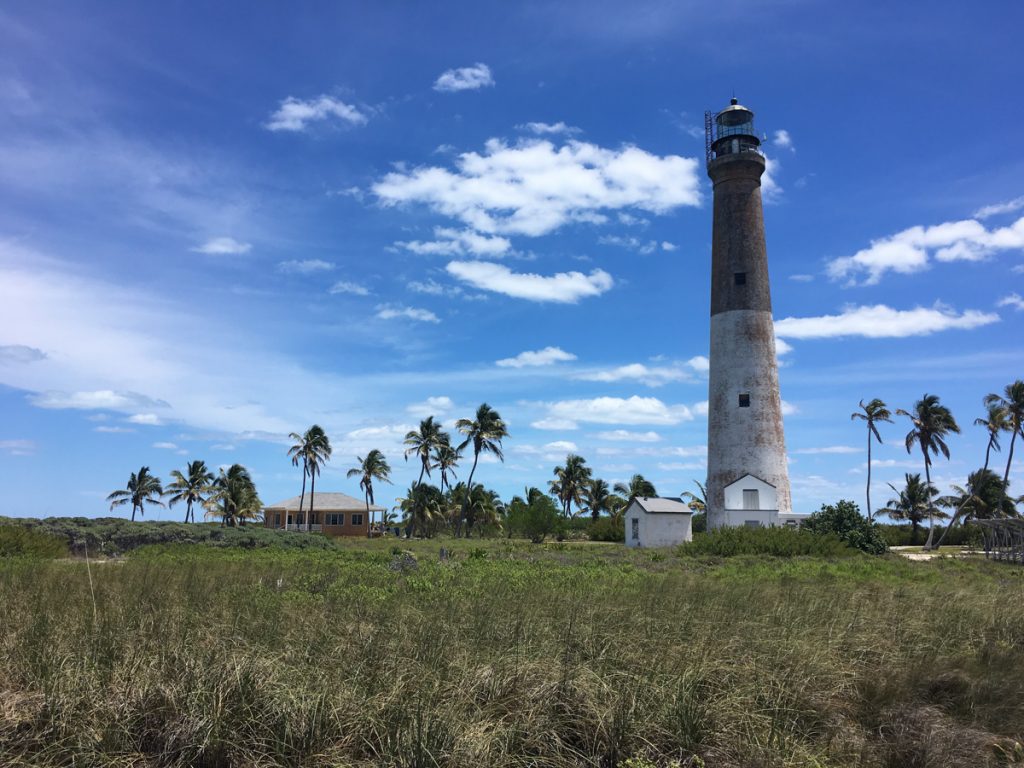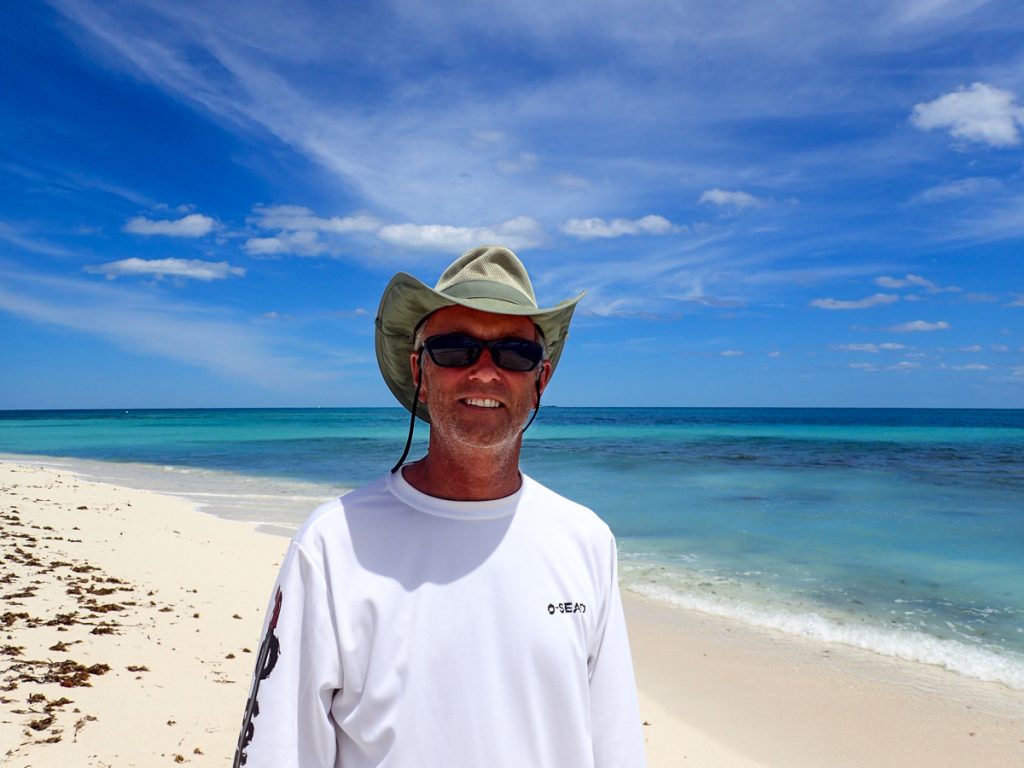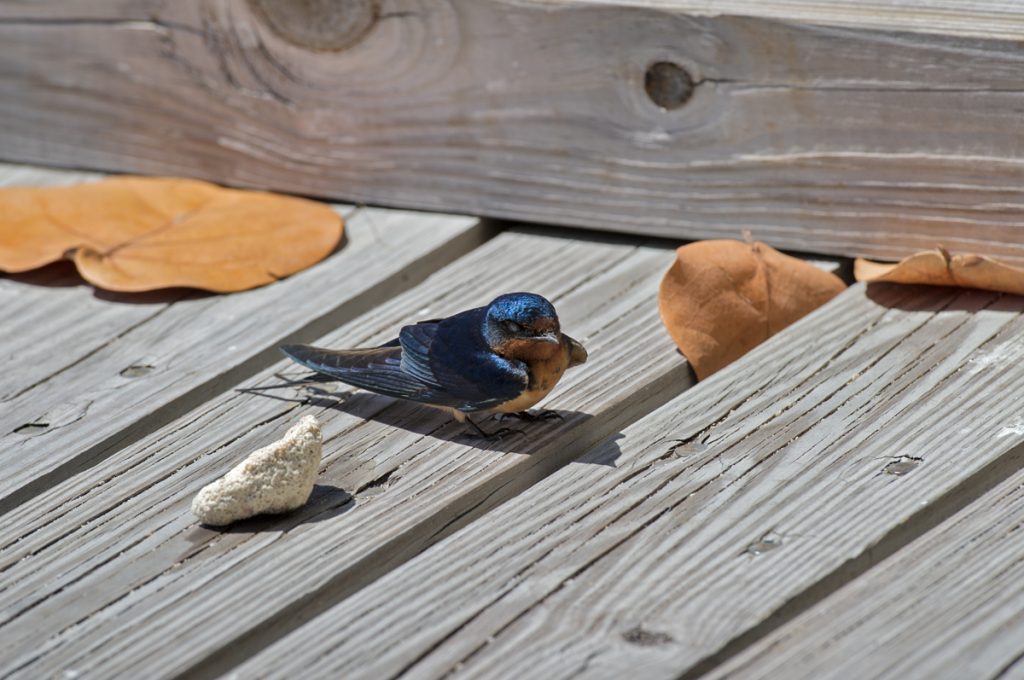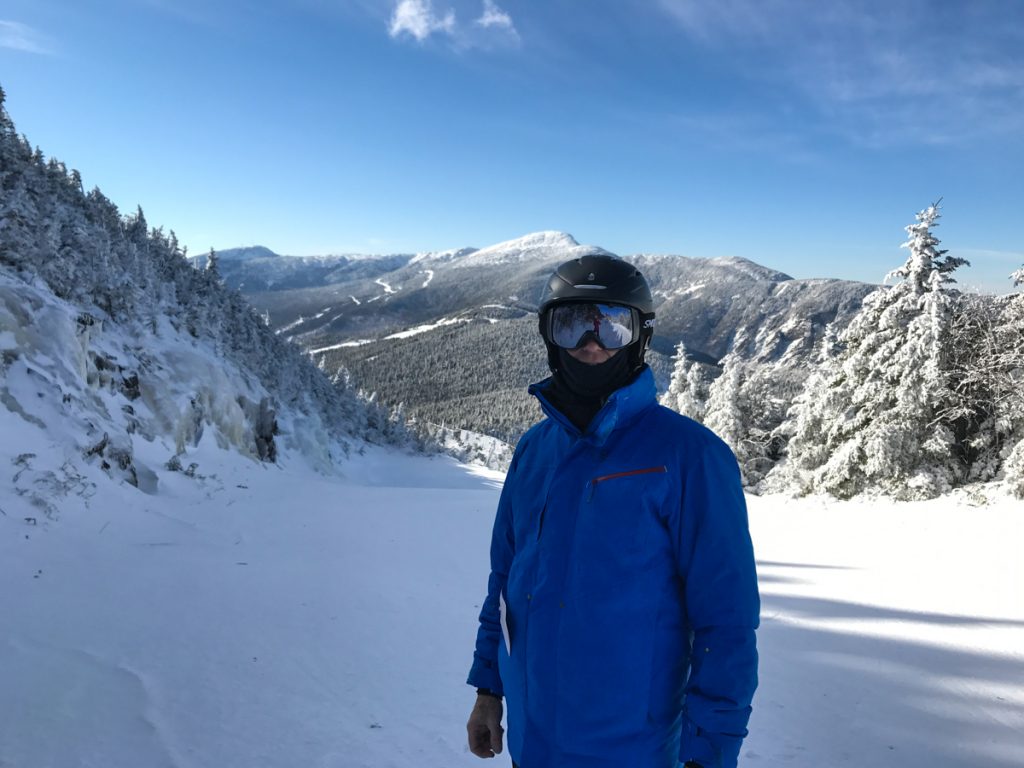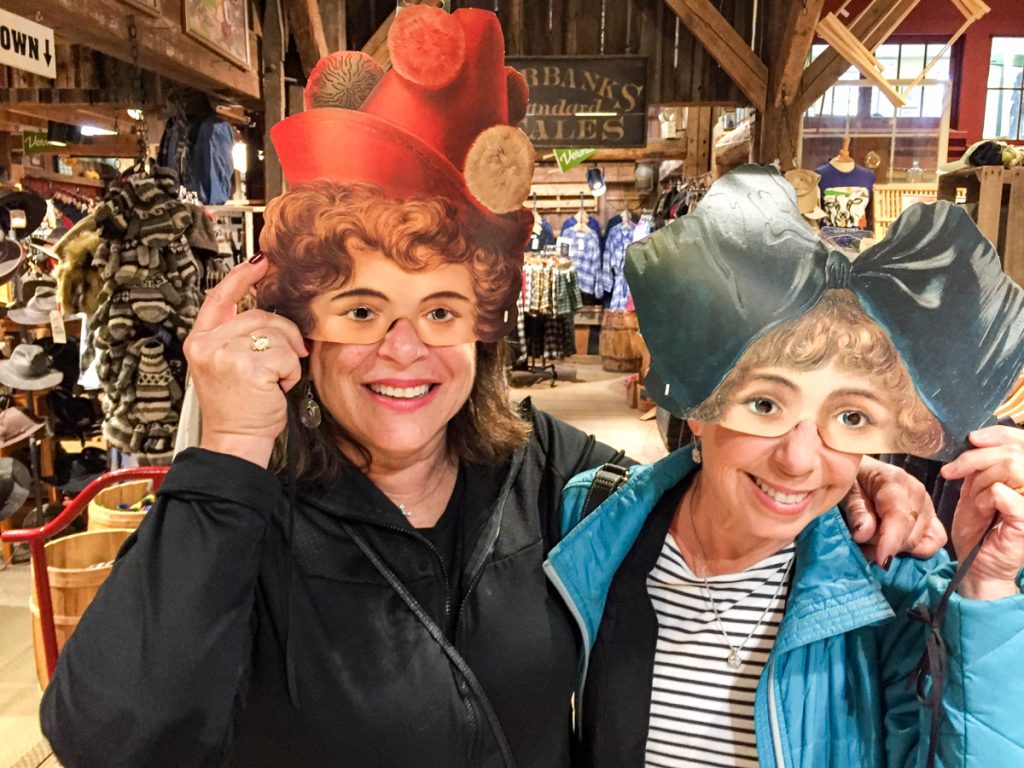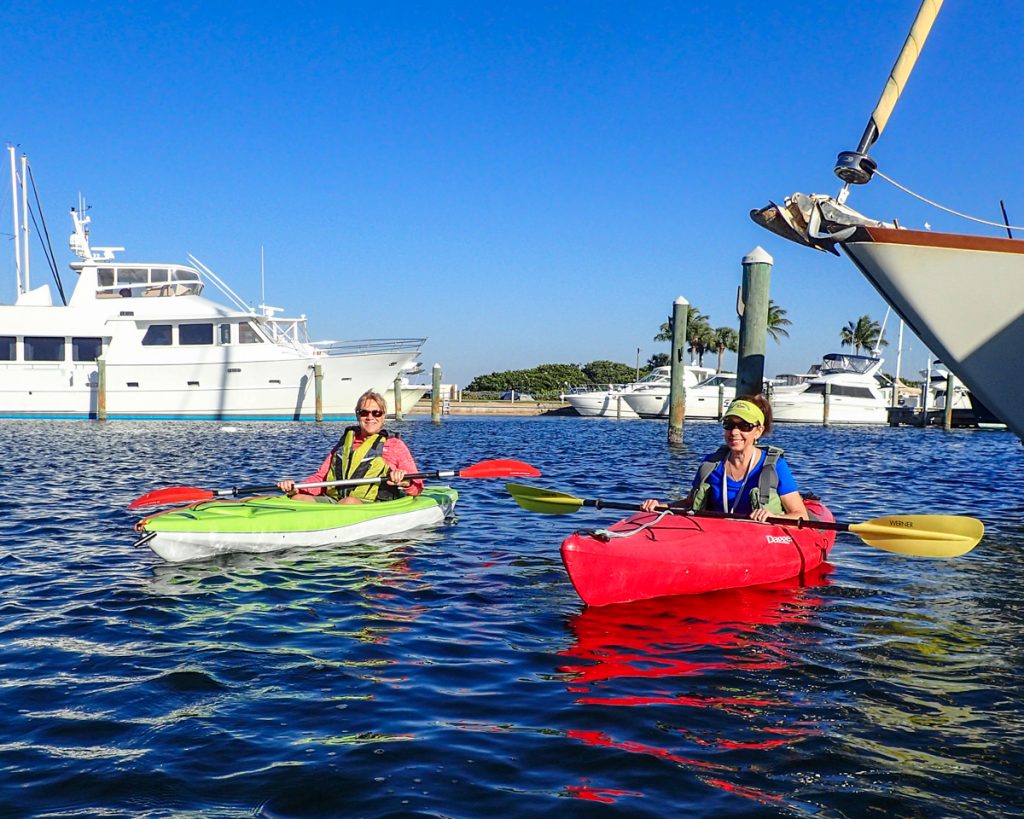The overnite trip from Venice to the Dry Tortugas was bumpy but uneventful. With the wind and seas on our nose we hobby horsed for 24 hours but towards sunset it subsided a bit. We actually made better progress than expected so at around 4AM I backtracked for an hour allowing us to arrive at daybreak and not in the pitch black.
The Dry Tortugas, approximately 70 miles west of Key West, is a group of seven islands and protected coral reefs. In 1513, the Spanish explorer, Juan Ponce de Leon was the first European to discover the islands. He named them Las Tortugas (The Turtles) because of all the turtles his men took. Soon Dry replaced Las on the charts indicating that no fresh water existed. The name is the second oldest surviving European place-name. Florida was first.
In 1846 the United States started construction on Fort Jefferson. Located on Garden Key, it is the largest all-masonry fort in the United States. Construction stopped in 1875 and the fort was never completed. Originally designed and built to protect the nations gateway to the Gulf of Mexico it never once fired a shot in battle. It served numerous functions over the years including use as a prison. Dr Samuel Mudd, the doctor who treated John Wilkes Booth, was imprisoned there until 1869. It remained in Union hands throughout the Civil War.
Rich in maritime history, the Dry Tortugas claimed the Spanish treasure fleet during a hurricane in 1622. The treasure hunter Mel Fisher discovered the Nuestra Senora de Atocha, the most famous of the Spanish fleet that sunk in 1622. The discovery yielded $450 million in treasure, including 114,000 “pieces of eight”, 40 tons of gold and silver and many other artifacts and emeralds.
Today the fort is part of the Dry Tortugas National Park. There are only a couple of designated anchorages and, short of having your own boat, access is available only by ferry or seaplane. There are some campsites outside of the fort but no other lodging. We had the pleasure of anchoring for three nights. Our anchorage spot was in the landing path of the two seaplanes that arrive and depart four times per day at the same time each. It was fun to watch them come and go only 75-100 feet from us.
Three miles to the west of Garden Key is Loggerhead Key. We thought it was uninhabited when we took the dinghy over to visit the lighthouse and beautiful beaches. It turns out that volunteers are on the island for a month or so at a time to “keep everyone honest” as the current volunteers told us. We met a wonderful retired couple from Colorado who had just arrived several days earlier for their month tour of duty. They had retired from the park service and volunteered for this work. They live in a small, solar powered house and tend to the islands needs and protect the history, lighthouse and beaches.
Visiting by our own boat provided benefits that we very much appreciated. We didn’t have to rush or meet a ferry schedule and we were able to visit by dinghy and kayak other inaccessible areas of the park.
The Dry Tortugas are also known for its birds. Tens of thousands migrate thru but only 7 species nest in the area regularly. After journeys of 100’s of miles many birds are completely exhausted.
On our last evening at anchorage we finally encountered Goliath Grouper. While basically harmless they are huge. I didn’t like sticking my arm off the stern with the waterproof camera to take the shots below. Ugly but exciting to see.




